Home > Articles > The Archives > Bill Harrell: The New Direction
Bill Harrell: The New Direction
Reprinted from Bluegrass Unlimited Magazine
May 1980, Volume 14, Number 11
Nearly everybody has a part of their past they don’t really like to talk about. When Bill Harrell was being interviewed for this article, he was asked about a particular time during his association with the great banjo-player and songwriter Don Reno. Harrell’s happy voice changed quickly to stern tones as he noted, “I don’t see much point talking about something like that cause it can’t do any good.”
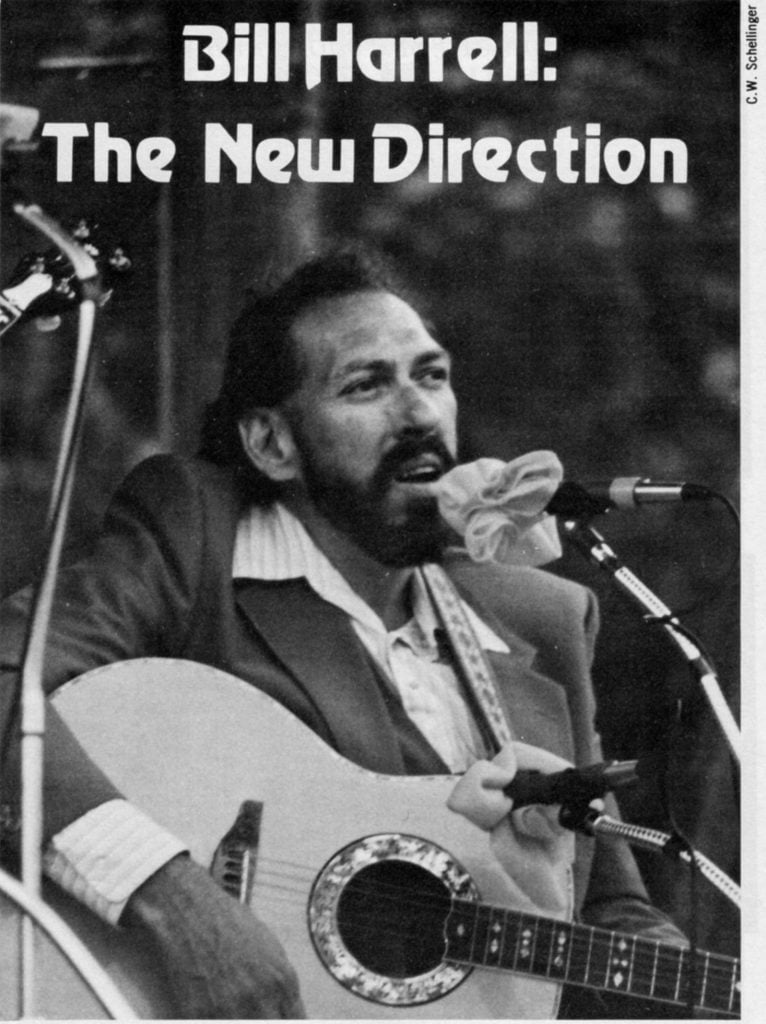
The truth of the matter is Harrell has few regrets about his past although some things may have been done differently. He says, however, “I am very proud of what is happening now. My band keeps me inspired. They play like I want them to play, and it’s going to get even better. You’re there on stage to entertain people, and when you do it right, it makes you happy. There are some days you can’t entertain people no matter how hard you try. When everything’s right, though, the circle closes round and everyone’s happy.”
There were some music fans who probably never expected to see Bill Monroe split from this brother, Charlie. There were some music fans who probably never expected to see Lester Flatt and Earl Scruggs call it quits almost at the peak of the popularity as a team. There were also many music fans who never expected to see Don Reno and Bill Harrell decide the magic was no longer there, and some changes needed to be made.
It depends on who you talk to about why the Reno-Harrell split came about. Some coins have even more than two sides. “We shook hands and parted friends with no hard feelings whatsoever,” Harrell related. He blamed their dissolution on Reno wanting to use more of his family in the act and also the residential distance between the two.
“The time I spent with Don (from 1966 to 1977) was 10 good years. We did a lot of things together that were a lot of fun, and I think we may be doing a lot of shows on the same day in 1980. For a while, promoters were hesitant about booking our different bands on the same day at a festival, but I think our paths will cross from time to time in the future, and we may even sing a jam session together.
“I don’t see us getting back together, though, in any kind of big relationship like in the past. Things are going to good for me like they are now, and I hear Don is also happy now. I want our fans to remember what Don and I did as a team, but I also want them to look forward to what each of us will do in the future.”
If there was something Bill Harrell was not, it was a college student totally dedicated to his studies. It was while attending the University of Maryland he became professionally interested in bluegrass music. That led to him leaving college after four years just 16 credits short of a degree in business administration. “Someday I might go back and finish, but then I got disinterested in school and more interested in music.”
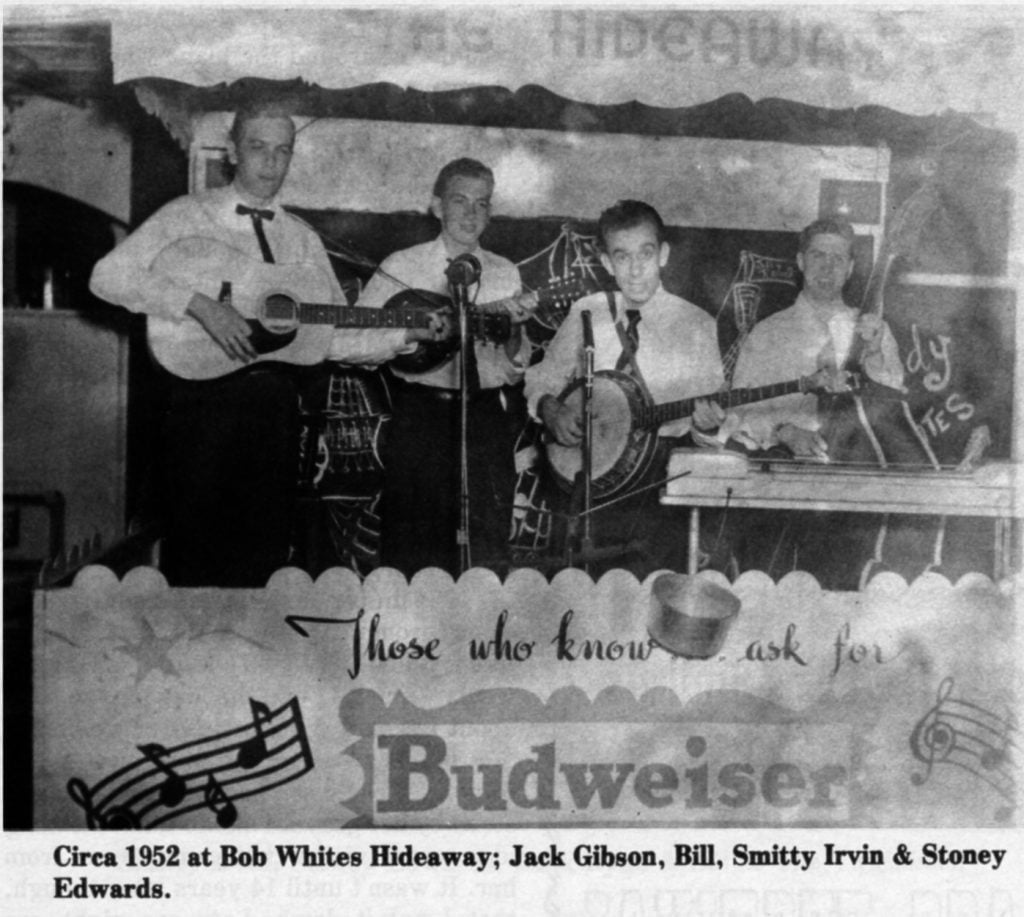
Harrell had been raised in southwestern Virginia which was also the home of such musical stars as The Carter Family, Jim and Jesse McReynolds, The Stanley Brothers and Mac Wiseman.
“My mother was an influence on almost everything I have done. We were real close. I once wrote a song called ‘My Mother’s Child’ that Don and I recorded. She was a school teacher and she taught piano lessons. My dad didn’t play any instruments, but he could sing on key. He had a good bass voice, and my family would sing around the piano when people came to visit; everything from ‘Little Brown Church in the Wildwood” to ‘When Irish Eyes Are Smiling.’
“I did take some piano lessons in my early life, and I learned to play some. When I was nine, though, my grandmother bought me a guitar. All the big Grand Ole Opry stars say they got a guitar for $6. Well, my grandmother really did buy me one for $6. It didn’t even have a name for it. I learned how to play chords through the process of elimination. You could say the musical environment was there in my early life although I didn’t play much of anything for the public until I got in college.”
The influence of Harrell’s mother also came through strongly in a recent song he wrote called “A Visit To Mother’s Grave.” He explained, “I had the idea for the song about 14 years ago shortly after we buried her. It was a way for me to receive a little comfort. I could see her talking to me as I stood by her grave. I like to think the song idea was a vision that came to me from her. It wasn’t until 14 years later though, that I put it down. Late one night, we were in our camper van coming back from Fan Fair in Nashville. I was driving, and Ed Ferris was sitting near me. The rest of the boys were asleep. As we neared Marion, Virginia, I told Ed, ‘That cemetery on the hill is where my mother’s buried.’ I wrote the song in my mind that night and put it on paper the next day.”
During his college years, Harrell played mandolin with two other college students (Dave Swann on banjo and Moe Leibowitz on guitar) in a group called The Rainbow Mountain Boys. “We just played for fun at college parties. We did get to do a 15-minute radio show every Saturday for WDON in Wheaton, Maryland. That’s where I met Mike Auldridge (Seldom Scene’s Dobro player) who was playing a guitar at the time.”
In 1953 he began playing in a band led by Smitty Irvin, and then around 1955, Harrell encountered Don Reno and Red Smiley performing regularly at Wayson’s Corner, about 20 miles outside Washington, D.C. He started joining them on some numbers and soon became their mandolin player. That led to Saturday night television exposure in Washington over a program called Town and Country Time. There he met other entertainers like Jimmy Dean (now more known for his sausages than his music), Eddy Arnold, Bill Monroe and Patsy Cline.
“I knew Patsy Cline very well from when she was just starting out in the music business. I think, by far, she is the best female country music singer to ever come along. A lot of country music stars today were influenced by her,” Harrell recalled.
A short time prior to the Town and Country Time program, Harrell saw some show business stars for the first time. They were Hank Williams and Grandpa Jones. “They were doing a show on a boat that went between Washington, D.C., and Mount Vernon. Jones was so young he had to paint his wrinkles on his forehead. Williams was a big star then, and everybody wanted to shake his hand. Everybody had been screaming for him to do ‘Lovesick Blues.’ Finally he closed his show with it, and everbody got so excited I thought the boat was going to turn over. I went up to him, shook his hand and told him he did a good show.”
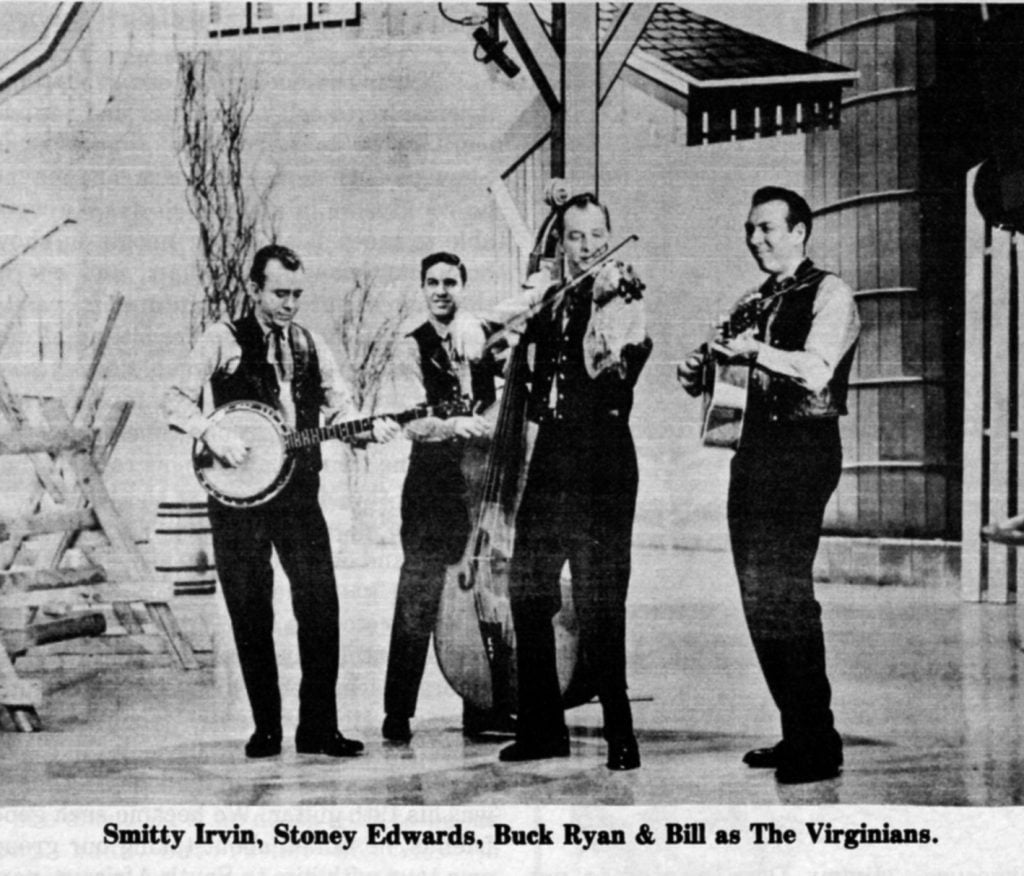
When Reno and Smiley left the Town and Country Time show, Harrell stayed and formed a band called ‘The Virginians” with Roy Self on bass, Donnie Bryant on banjo, Smiley Hobbs on mandolin and Carl Nelson on fiddle. When Bryant was drafted, he was replaced by Eddie Adcock.
Eventually, Uncle Sam also called Harrell and The Virginians disbanded. The early ‘60s found Harrell performing on a television program for WSVA in Harrisonburg, Virginia. “Every once in a while, we would put a guest on the show. On the recommendation of a disc jockey, I put this group on that turned out to be bad enough to sour a glass of milk. The station manager called me on the carpet and told me not to put anybody else on without hearing them first. Shortly after that, I got a telephone call from this guy who said he was part of a local group and they wanted to be on my show.
“I told him, ‘That would be great,’ and I asked if he could bring his group over so I could hear them before putting them on the air. He thanked me, not sounding too happy, and hung up. A week or so later, his group had out a song called ‘Flowers On The Wall,’ and I had missed a chance to have The Statler Brothers on my show! That always has been a big embarrassment to me. I never have mentioned that to them in the years since.”
It was in the early ’60s also that a past friendship from the Town and Country Time show led to national television exposure. “Jimmy Dean wanted to put some bluegrass music on his weekly show, so I went to audition with a band that also consisted of Buck Ryan, Smitty Irvin and Stoney Edwards. Smitty and Buck also had worked with Jimmy earlier. We passed the audition, and went on to play on Jimmy’s show quite often for about three years.
“I was the booker for our group, and it was nice to call a promoter and say we were going to be on the Jimmy Dean Show on such and such a date, and maybe he could tune in and watch us. We were able to meet a lot of big people in show business through that show, and one of the happiest occurrences in my life was to meet Jim Reeves. We were sitting at one rehearsal just talking when Reeves said that almost all the guitar companies had given him a guitar at one time or another hoping he would play it on his records, but he liked the Martin guitar the best.
“He especially liked my Martin guitar, and he asked me to pick one out for him. He gave me a blank check, and I went to a store in New York on West 48th Street, and I played six different Martins before I picked one out for $300 including the case. He was pleased when I took it back to him. He said, ‘It looks like you picked out a good one,’ and he told me it was his 19th guitar. We became such good friends, he talked about taking our group on a tour with him to South Africa as part of the Jim Reeves show. Just a few months later, though, he died in that plane crash. I’ve wondered if the guitar I picked out for him was aboard that plane.”
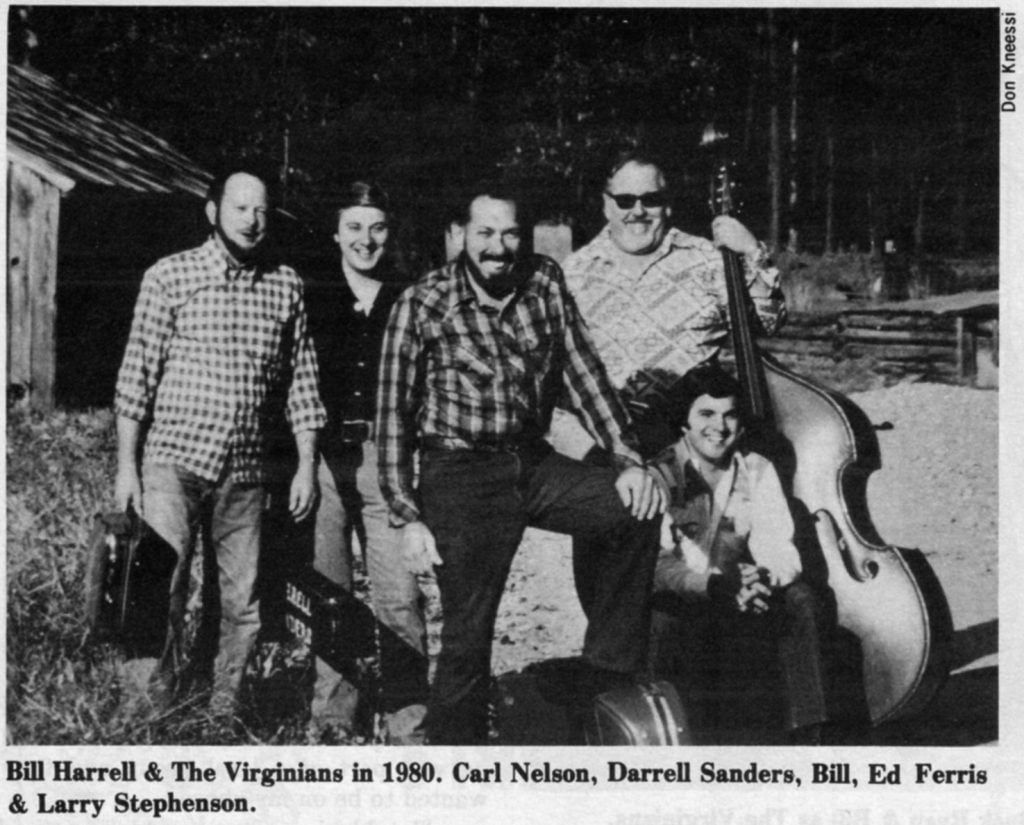
There were many good times during the years Harrell was on the nationally-televised Dean show. On one occasion at a party, someone taped the sound of Harrell snoring while sleeping. Smitty Irvin put background guitar music to the snoring, and Dean thought it was so funny, he played the tape on his show. Harrell says, ‘I’m probably one of the few people who has snored with music coast to coast.’”
In 1966, Harrell rejoined Don Reno to make musical history. He was in a traffic accident in April 1977 that left Harrell with two broken legs and broke the team up for two months. Then in September, Harrell and Reno officially called it quits to go their separate ways.
“The way to form a good group is to start off with people who can do what you want,” Harrell advises.
He continued, “Ed Ferris who had played with Don and me for a long time decided to stay with me and be my bass fiddle player. Ed used to play for The Country Gentlemen, taking Tom Gray’s place. He has done many record sessions around the Washington, D.C., area. What I like about Ed is he doesn’t try to be his own band, but rather he tries to complement the group. I’m glad that recently he has taken more of an interest in singing.
“Carl Nelson, who had played fiddle in my original Virginians group, rejoined ine. He has played fiddle all over the world and was a member of Roy Clark’s group. He is just a musician’s musician.
“As for Darrell Sanders, he wrote two banjo numbers we’ve recorded and another one we’re going to do. He is from Martinsburg, West Virginia, and was once with Charlie Moore. He is getting better all of the time.
“Then our newest group member is Larry Stephenson, who plays mandolin and is a super high tenor singer. He had his own group and was doing a great job with them before joining us. I got a card from him this past Christmas in which he thanked me for what he said was the happiest year of his life. We’re glad to have him with us.”
The reorganized Virginians have recorded three albums: “Ballads and Bluegrass,” “Bluegrass Gospel Pure and Simple” and “I Can Hear Virginia Calling Me.”
Ironically, it is probably one of the recordings made by Reno and Harrell that states what Harrell’s present life is all about. He and Roy Self co-wrote a song recorded on the “Rivers and Roads” album that observes, “Yonder lies the greener grass/So don’t expect me back/They say I’ve got a one track mind/But I’m on the right track.”
As for the many bluegrass fans who have accepted Harrell’s new group, Harrell remarked, “I love them all for it. I’m very grateful for every fan that I have, and I hope to build many more.’’
Share this article
2 Comments
Leave a Comment Cancel Reply
This site uses Akismet to reduce spam. Learn how your comment data is processed.
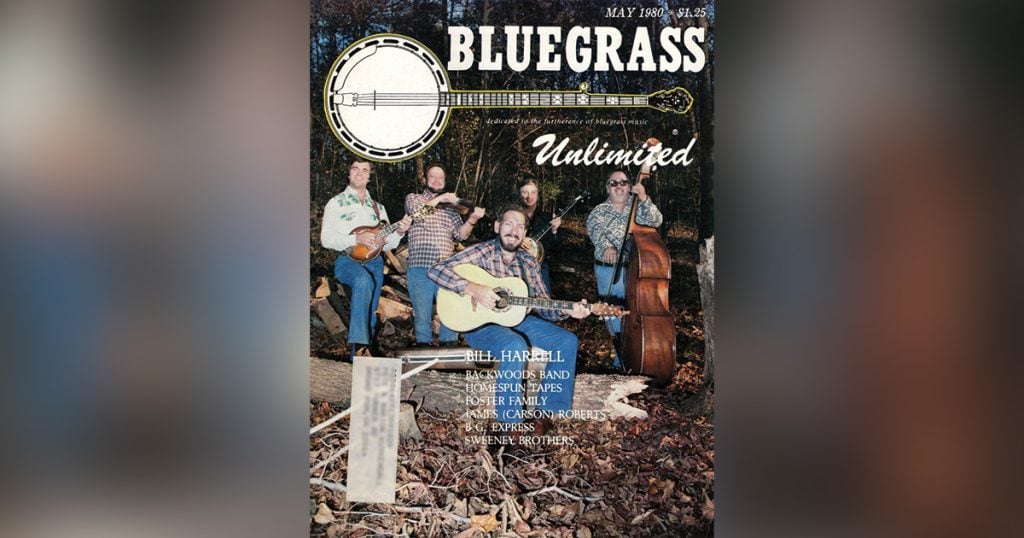
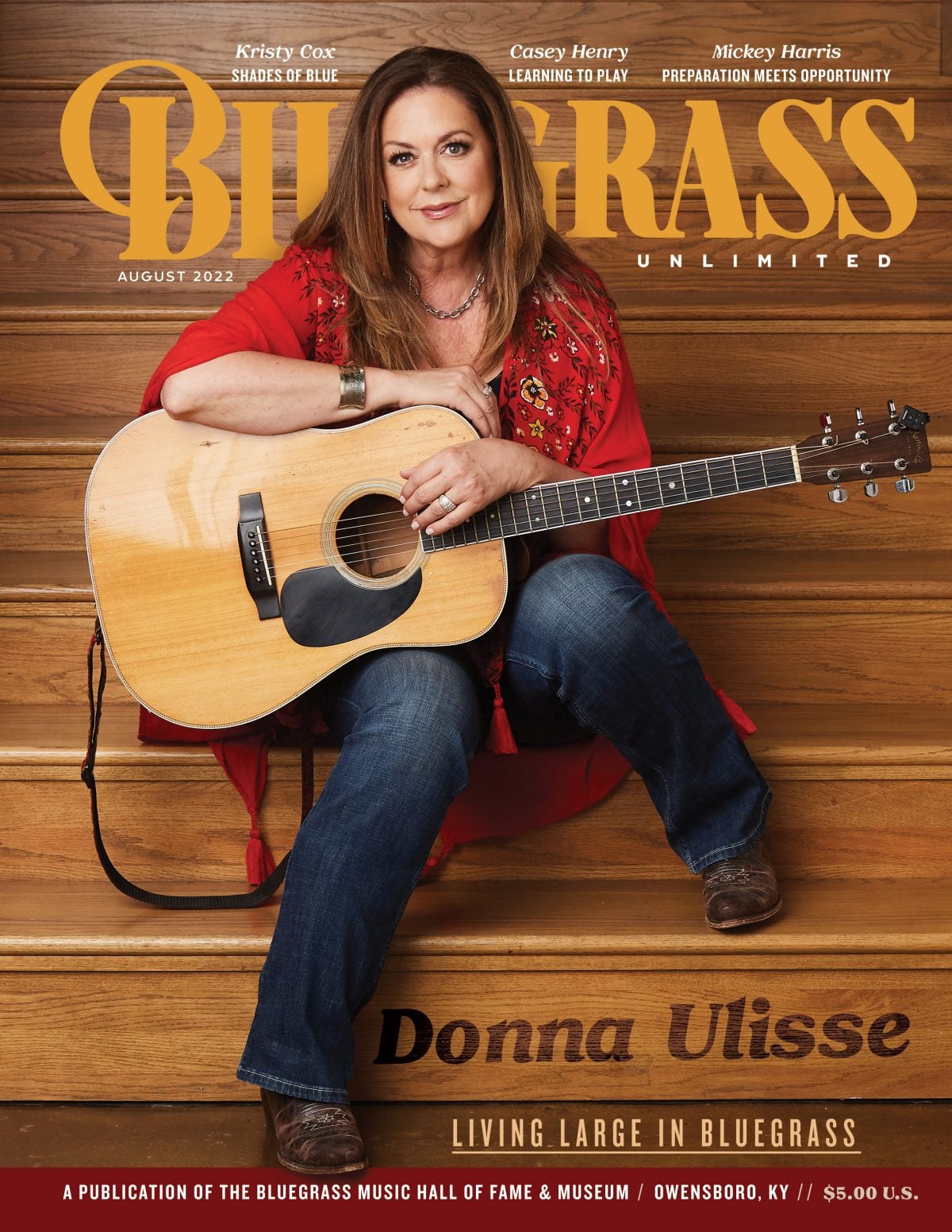
Many, many thanks for a memorable article about Bill Harrell. 1980 was a pretty good year for DC area bluegrass!
This is a great article-it’s the only one that mentioned my dad Mo Lebowitz who was his good friend in college-he had a bluegrass radio show on campus at UMD and they played in the ‘Rainbow Mountain Boys’ band.